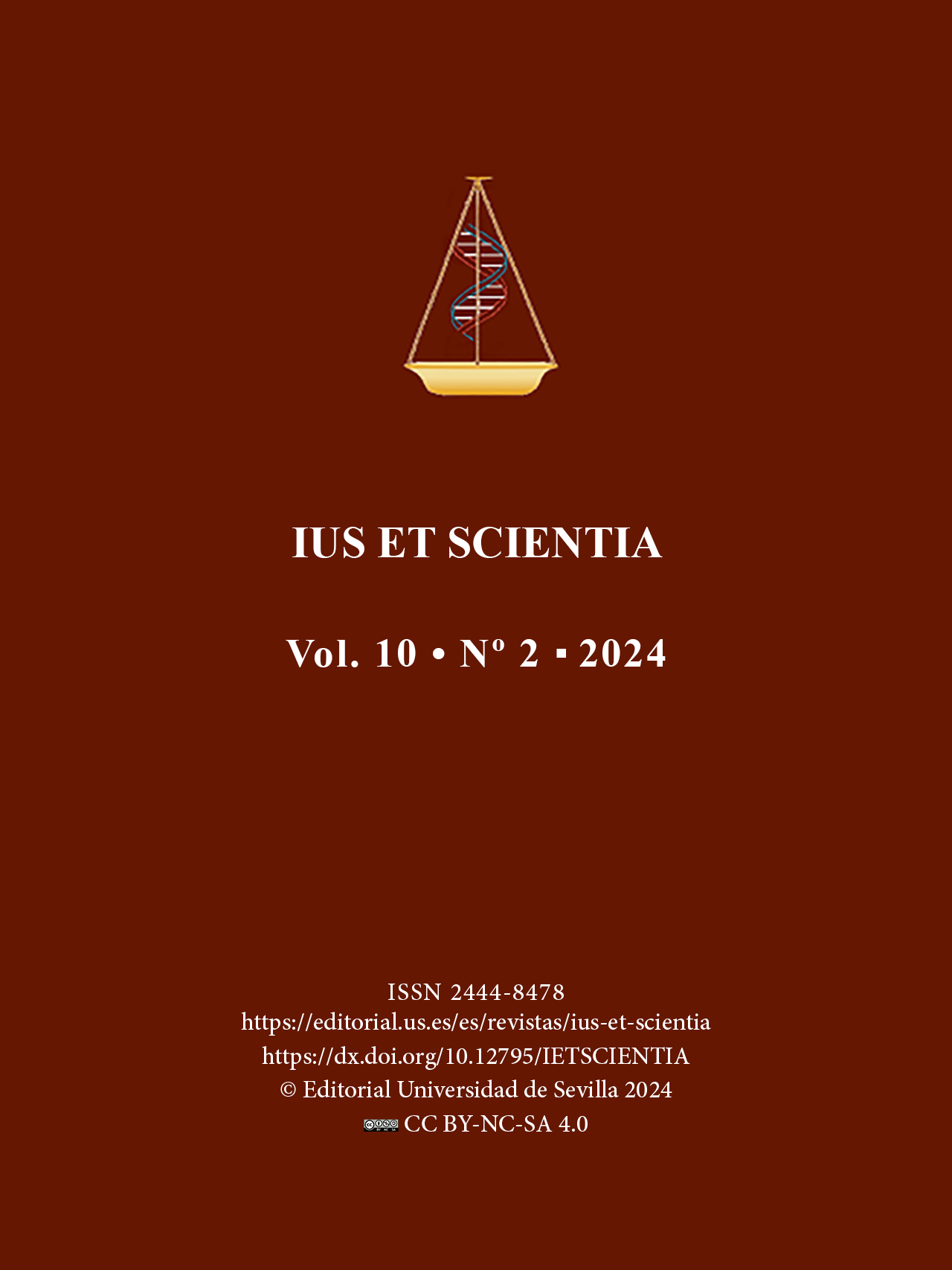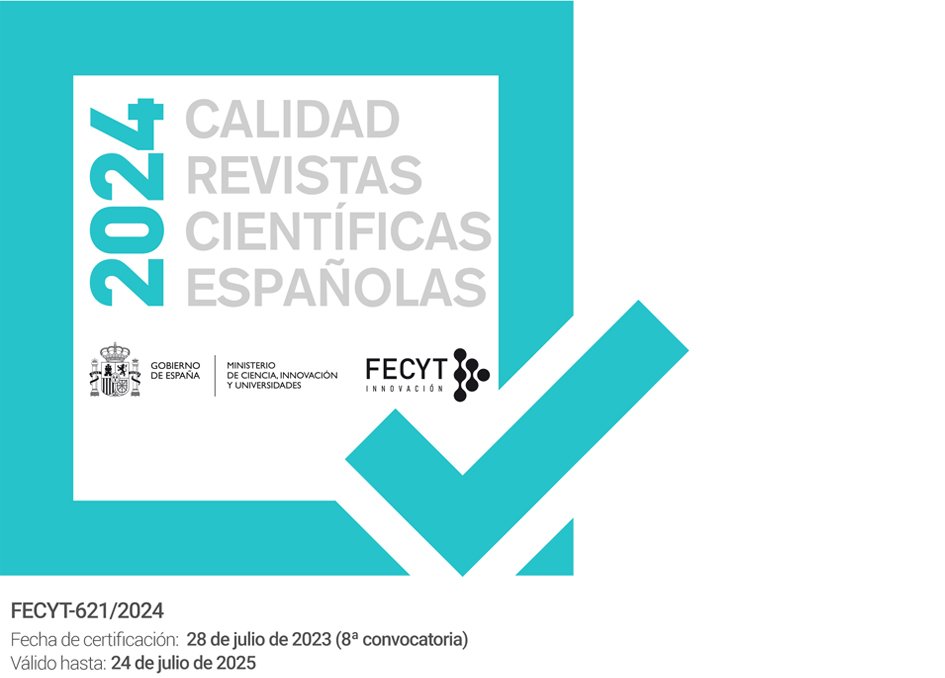Neuroimagen y responsabilidad penal. Perspectivas y desafíos
DOI:
https://doi.org/10.12795/IESTSCIENTIA.2024.i02.07Palabras clave:
Neuroimagen, Responsabilidad penal, Mens rea, Actus reus, Ética judicial, Resonancia magnética, Resonancia magnética funcional, Evidencia neurocientífica, Derecho penalResumen
Este artículo analiza el uso de la neuroimagen en la evaluación de la responsabilidad penal, destacando sus perspectivas y desafíos en el ámbito legal. Se exploran técnicas avanzadas como la resonancia magnética (MRI) y la resonancia magnética funcional (fMRI), enfocándose en su capacidad para mapear el cerebro y evaluar la mens rea (intención criminal) y la conciencia durante la comisión de delitos. El trabajo se divide en secciones que abarcan la interpretación de conceptos legales mediante neuroimagen, los dilemas éticos y prácticos asociados, y las limitaciones técnicas de estas tecnologías. Además, se discute la relevancia de la neuroimagen en casos penales, evaluando su impacto en la jurisprudencia y la necesidad de una integración cuidadosa y ética en los procesos judiciales. Este enfoque interdisciplinario busca promover una justicia penal más informada y equitativa, considerando tanto los avances tecnológicos como los derechos fundamentales de los individuos.
Descargas
Citas
Legislación
Criminal Justice Act 2003.
Criminal Procedure (Insanity) Act 1964.
Evidence Act 1995.
Mental Health Act 1983.
United Nations General Assembly, 1948. Universal Declaration of Human Rights. [en línea] Disponible en: http://www.un.org/en/universal-declaration-human-rights/ [Consultado el 13 mayo 2024].
United Nations General Assembly, 1991. Principles for the Protection of Persons with Mental Illness and the Improvement of Mental Health Care. [en línea] Disponible en: https://www.ohchr.org/en/instruments-mechanisms/instruments/principles-protection-persons-mental-illness-and-improvement-mental [Consultado el 13 mayo 2024].
Jurisprudencia
Daubert v Merrell Dow Pharmaceuticals, Inc (1993) 509 US 579.
Dugan v State (2009) 124 Nev 512.
People v Weinstein (1992) 156 Misc 2d 34.
R v Burgess [1991] 2 WLR 1206.
R v Chan Fook [1994] 1 WLR 689.
R v Falconer [1990] 1 WLR 623.
R v Hennessy [1989] 1 WLR 287.
R v T [2009] EWCA Crim 1035.
State of Florida v Bradley (2007) 917 So 2d 1065.
State v Mack (2005) 2005-Ohio-6131.
Taxquet v Belgium [2010] ECHR 1806.
United States v Semrau (2010) 2010 WL 6845092.
Fuentes secundarias
Aharoni, E., et al. (2008). Can neurological evidence help courts assess criminal responsibility? Lessons from law and neuroscience. Annals of the New York Academy of Sciences, 1124(1), 145–160. https://doi.org/10.1196/annals.1440.007
Altimus, C. M. (2017). Neuroscience has the power to change the criminal justice system. eNeuro, 3(6), ENEURO.0362-16.2016. https://doi.org/10.1523/ENEURO.0362-16.2016
Aono, D., et al. (2019). Neuroscientific evidence in the courtroom: a review. Cognitive Research: Principles and Implications, 4(1), 40. https://doi.org/10.1186/s41235-019-0179-y
Arnason, G. (2010). Neuroimaging, uncertainty, and the problem of dispositions. Cambridge Quarterly of Healthcare Ethics, 19(2), 188–195. https://doi.org/10.1017/S0963180109990454
Arrigo, B. A. (2007). Punishment, freedom, and the culture of control: The case of brain imaging and the law. American Journal of Law & Medicine, 33(2–3), 457–482. https://doi.org/10.1177/009885880703300213b
Bellucci, G., et al. (2017). Effective connectivity of brain regions underlying third-party punishment: Functional MRI and Granger causality evidence. Social Neuroscience, 12(2), 124–134. https://doi.org/10.1080/17470919.2016.1153518
Brown, E. (2019a, September 4). Why neuroscience is coming to courtrooms. Discover Magazine. https://www.discovermagazine.com/mind/why-neuroscience-is-coming-to-courtrooms (Accessed: 20 February 2024).
Brown, E. (2019b, September 7). Is neurolaw coming soon to a courtroom near you? Scientific American. https://www.scientificamerican.com/article/is-neurolaw-coming-soon-to-a-courtroom-near-you/ (Accessed: 15 March 2024).
Cáceres Nieto, E., et al. (2021). Neuroética y neuroderechos. Revista del Posgrado en Derecho de la UNAM, 8(15), Julio-Diciembre. https://doi.org/10.22201/ppd.26831783e.2021.15.179
Dresser, R. (2010). Brain imaging and courtroom deception. The Hastings Center Report, 40(6), 7–8. https://doi.org/10.1002/j.1552-146X.2010.tb00066.x
Gkotsi, G. M., et al. (2019). Neuroimaging in criminal trials and the role of psychiatrists expert witnesses: A case study. International Journal of Law and Psychiatry, 65, article number 101359. https://doi.org/10.1016/j.ijlp.2018.05.007
Greene, E., & Cahill, B. S. (2012). Effects of neuroimaging evidence on mock juror decision making. Behavioral Sciences & the Law, 30(3), 280–296. https://doi.org/10.1002/bsl.1993
Gurley, J. R., & Marcus, D. K. (2008). The effects of neuroimaging and brain injury on insanity defenses. Behavioral Sciences & the Law, 26(1), 85–97. https://doi.org/10.1002/bsl.797
Hafner, M. (2019). Judging homicide defendants by their brains: an empirical study on the use of neuroscience in homicide trials in Slovenia. Journal of Law and Biosciences, 6(1), 226–254. https://doi.org/10.1093/jlb/lsz006
Hardcastle, V. G., & Lamb, E. (2018). What difference do brain images make in US criminal trials? Journal of Evaluation in Clinical Practice, 24(4), 909–915. https://doi.org/10.1111/jep.12932
Henry, S., & Plemmons, D. (2012). Neuroscience, neuropolitics and neuroethics: The complex case of crime, deception and FMRI. Science and Engineering Ethics, 18(3), 573–591. https://doi.org/10.1007/s11948-012-9393-4
Ienca, M., & Andorno, R. (2017). Towards new human rights in the age of neuroscience and neurotechnology. Life Sciences, Society and Policy, 13(1), 5. https://doi.org/10.1186/s40504-017-0050-1
Jones, O. D. (2022). The future of law and neuroscience. William and Mary Law Review, 63(4), 1317–.
Klapwijk, E. T., et al. (2016). Fairness decisions in response to emotions: a functional MRI study among criminal justice-involved boys with conduct disorder. Social Cognitive and Affective Neuroscience, 11(4), 674–682. https://doi.org/10.1093/scan/nsv150
Krueger, F., et al. (2014). An fMRI investigation of the effects of belief in free will on third-party punishment. Social Cognitive and Affective Neuroscience, 9(8), 1143–1149. https://doi.org/10.1093/scan/nst092
Ligthart, S. L. T. J. (2019). Coercive neuroimaging, criminal law, and privacy: an European perspective. Journal of Law and the Biosciences, 6(1), 289–309. https://doi.org/10.1093/jlb/lsz015
Markowitsch, H. J., & Staniloiu, A. (2011). Neuroscience, neuroimaging and the law. Cortex, 47(10), 1248–1251. https://doi.org/10.1016/j.cortex.2011.06.013
Nestor, P. G. (2019). In defense of free will: Neuroscience and criminal responsibility. International Journal of Law and Psychiatry, 65, 101344. https://doi.org/10.1016/j.ijlp.2018.04.004
Patel, P., et al. (2007). The role of imaging in United States courtrooms. Neuroimaging Clinics of North America, 17(4), 557–567. https://doi.org/10.1016/j.nic.2007.07.001
Raine, A., et al. (1998). Reduced prefrontal and increased subcortical brain functioning assessed using positron emission tomography in murderers. Behavioral Sciences & the Law, 16(3), 319–332. https://doi.org/10.1002/(SICI)1099-0798(199822)16:3
Saks, M. J., et al. (2014). The impact of neuroimages in the sentencing phase of capital trials. Journal of Empirical Legal Studies, 11(1), 105–131. https://doi.org/10.1111/jels.12036
Schweitzer, N. J., & Saks, M. J. (2011). Neuroimage evidence and the insanity defense. Behavioral Sciences & the Law, 29(4), 592–607. https://doi.org/10.1002/bsl.995
Snow, C. P. (1959). The two cultures and the scientific revolution. Cambridge: Cambridge University Press.
Stevens, G. P. (2020). My brain made me do it? Reflections on the role of neuroscience in assessing criminal responsibility - a South African medico-legal perspective. Psychiatry, Psychology, and Law, 27(2), 202–213. https://doi.org/10.1080/13218719.2019.1688131
Publicado
Cómo citar
Número
Sección
Licencia
Derechos de autor 2024 Enric Mallorqui-Ruscalleda

Esta obra está bajo una licencia internacional Creative Commons Atribución-NoComercial-CompartirIgual 4.0.
Aquellos autores/as que tengan publicaciones con esta revista, aceptan los términos siguientes:- Los autores/as conservarán sus derechos de autor y garantizarán a la revista el derecho de primera publicación de su obra, el cuál estará simultáneamente sujeto a la Licencia de reconocimiento de Creative Commons que permite a terceros compartir la obra siempre que se indique su autor y su primera publicación esta revista.
- Los autores/as podrán adoptar otros acuerdos de licencia no exclusiva de distribución de la versión de la obra publicada (p. ej.: depositarla en un archivo telemático institucional o publicarla en un volumen monográfico) siempre que se indique la publicación inicial en esta revista.
- Se permite y recomienda a los autores/as difundir su obra a través de Internet (p. ej.: en archivos telemáticos institucionales o en su página web) antes y durante el proceso de envío, lo cual puede producir intercambios interesantes y aumentar las citas de la obra publicada. (Véase El efecto del acceso abierto).




